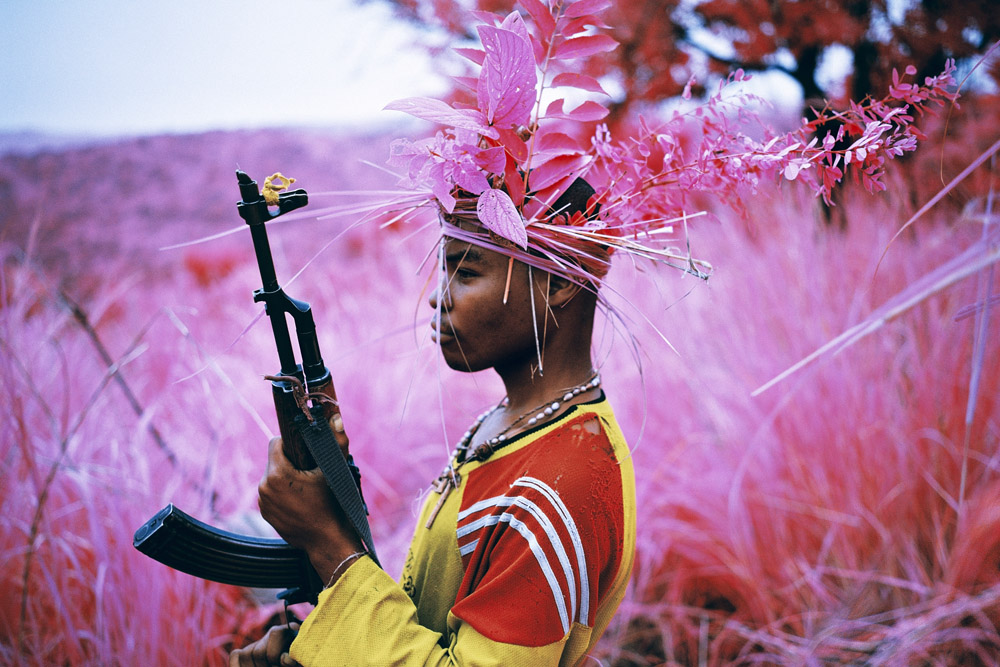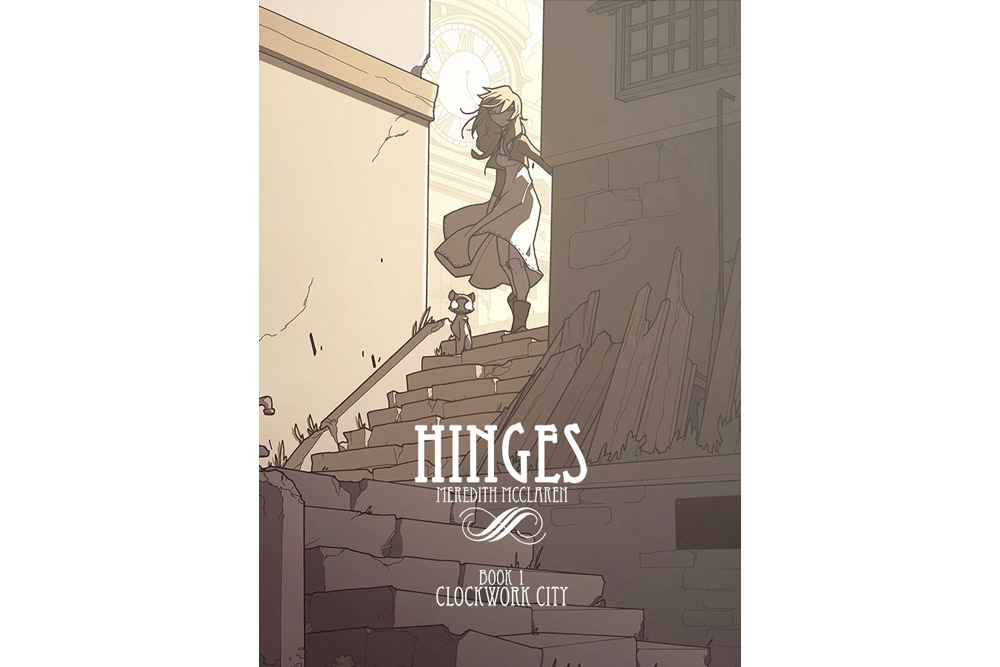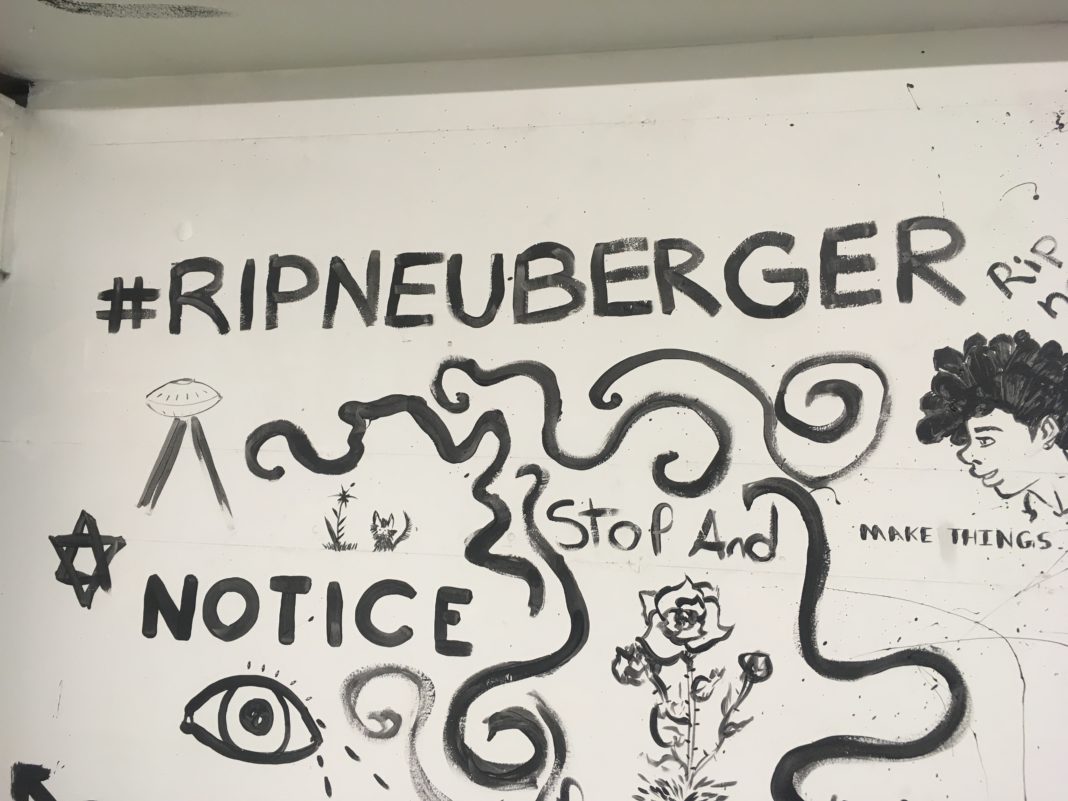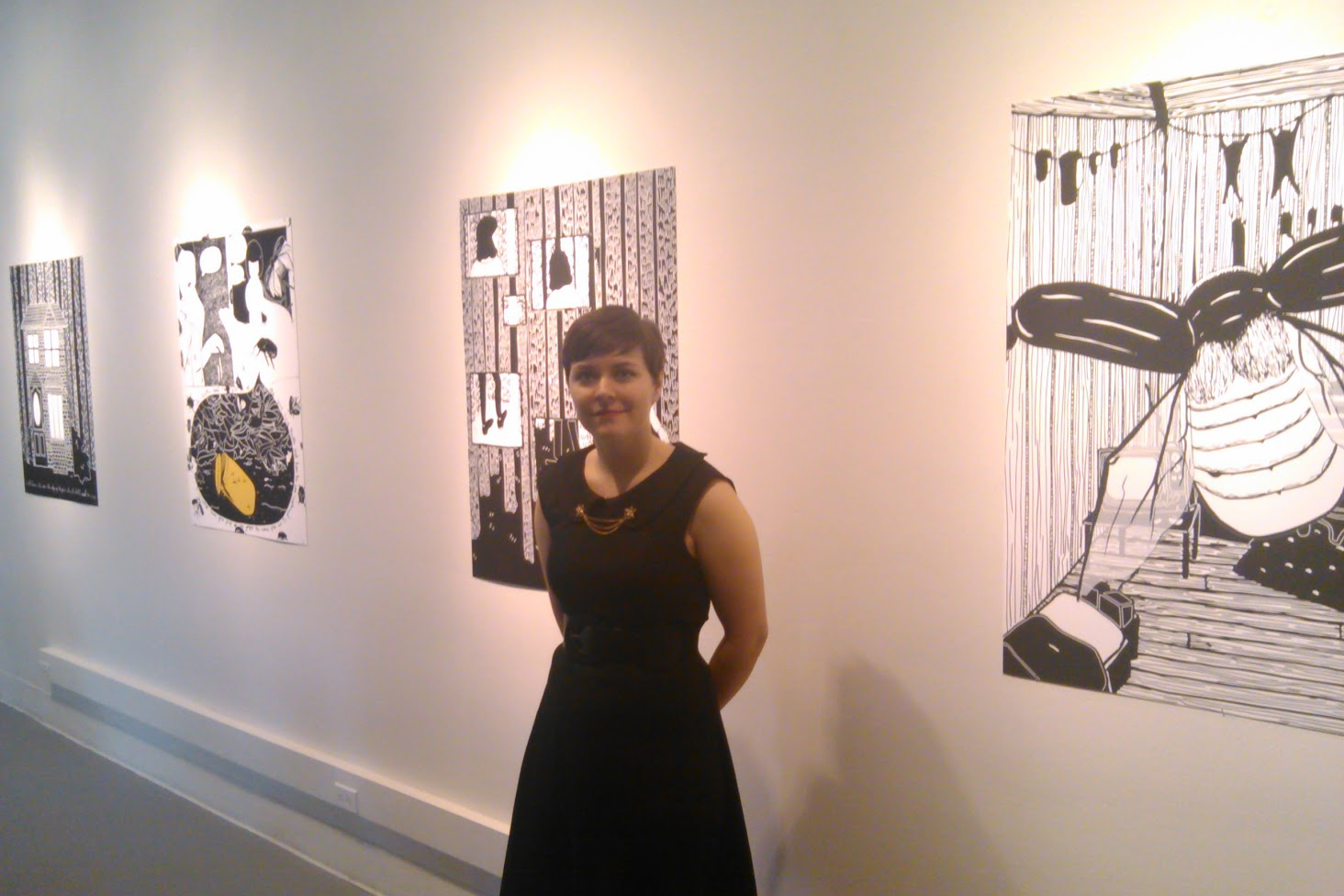The Portland Art Museum held a two-hour-long discussion about an existing art exhibit, The Enclave, led by Portland State Professor Sarah Wolf Newlands on March 15. The exhibit itself will be on display until April 12.
The workshop dissected the efforts of Richard Mosse, the artist and photographer of The Enclave.
The last seminar in a series of three, “In Dialogue with The Enclave: Photojournalistic, Psychedelic, and Sublime” reached out to all audiences and age groups interested in analyzing Mosse’s work.
The Enclave is a series of color infrared video clips that depict true life for families, soldiers and children in the Democratic Republic of the Congo.
Mosse traveled to the Congo nine times, compiling videos of everyday life in the Congo, along with pictures which are included in the exhibit and presented as Infra.
Mosse’s pictures and videos can be described as brutal, raw and even disturbing.
“I had no idea what I was getting into, learning about the Democratic Republic of the Congo,” Prof. Newlands said. “Artists can provoke us.”
All 17 attendees were encouraged by Prof. Newlands to participate in her discussion regarding the severe suffering that occurs within the Congo and how that can be seen through Mosse’s work in a photojournalistic and psychedelic way, as well as through the sublime.
“[The Congo is] so mysterious, dark and out of control,” said Donald Newlands, attendee of the discussion and husband to Prof. Newlands. “You can’t really understand the scale. There is this big void in terms of how we understand it. And, ironically, it is these places that we only understand through journalism. These representations try to make us feel and connect to how vast the tragedy is.”
Prof. Newlands focused her attention on rich discussion during her presentation. Prof. Newlands, who teaches the yearlong freshman inquiry class The Work of Art, took her class to see The Enclave and included many related readings and art projects as assignments.
“Teaching that class was scary,” Prof. Newlands said. “I wouldn’t have taught it if [my students] weren’t so close and mature.”
After her students saw Mosse’s exhibit, Prof. Newlands encouraged them to ask how art can play a role in a situation like that exposed by The Enclave. Her students were stimulated to look at their own roles and participate as artists.
Prof. Newlands paraphrased Mosse’s thoughts on his own work within The Enclave.
Mosse knew how disturbing and raw his findings were, but his intention was not to provoke change and action within people. Mosse put his art out into the world, and if someone is motivated to help change the Congo then that is great, but that was not the purpose of The Enclave.
“It is always so interesting to challenge students to look at something like this and say, ‘What is this?’” said Julia Dolan, photography curator for the Portland Art Museum.
Dolan believes that it is impossible to separate an image from its meaning. She said humans will always morph the two together. The Enclave shows real people of the Congo through flat pictures and images, but the meaning is just as loud and apparent.
“And if we have the wrong meaning, it is still our meaning because we bring so much to what is in front of us,” Dolan said.
Prof. Newlands is an active part of bringing students and Portland art closer together. Not only does she teach at PSU, but she is also an education affiliate for the Portland Art Museum and is on the Teacher Advisory Council at the museum.
Prof. Newlands consistently uses the Portland Art Museum as an extended classroom for her students.
“[The Portland Art Museum] is always trying new models for engaging learning,” Prof. Newlands said. “It increases adult education at the museum and does things that bridge PSU and the Portland Art Museum together.”
Hana Layson, school and teacher programs specialist at the Portland Art Museum, mirrored the same passion for The Enclave as Prof. Newlands. Layson was responsible for putting on the three seminars held at the Portland Art Museum regarding The Enclave.
“The Enclave in particular invites responses,” Layson said. It’s an exhibition that when people see it and experience it, they really want to talk about it. People have very complicated responses. I wanted to create an opportunity for people to have conversations about it.”
Layson wanted to invent a space for all kinds of people to feel open to discuss their thoughts about the exhibit, considering its sensitive material.
“One priority for me was that it was discussion based,” Layson said. “My other priority was that they were interdisciplinary, because I felt like The Enclave raises a lot of different issues that can be approached productively through different lenses.”






